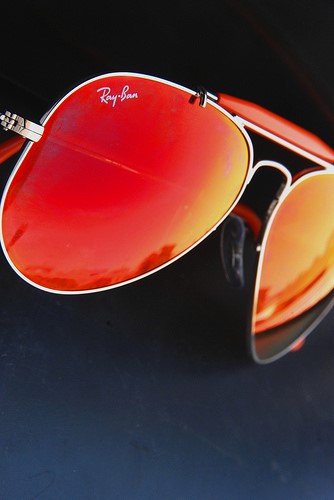|
|
Common Misconceptions About Sunglasses

|
|
It's easy to assume that all sunglasses are alike or that there's not a lot of difference between one pair to the next, but there are several significant differences between one pair of sunglasses and another. One of the biggest misconceptions is that a pair of dark sunglasses will provide better UV protections in sunlight than a pair of sunglasses with light lenses.
In fact, UV protection may actually be better on a pair of sunglasses with light lenses, simply because of the rating on those glasses. You'll want to look at the UV label on your sunglasses to determine how much protection against UV rays that they provide, rather than relying upon how dark the lenses of the sunglasses might appear.
Tip: Polycarbonate lenses offer the most UV protection of any type of lenses currently on the market.
Cloudy Days and Sunglasses
Another common misconception about sunglasses is that eye protection from the sun is only required when it's sunny outside. In fact, even a cloudy, overcast day might require sunglasses, particularly if you might be spending your day out on the water. Ultraviolet rays from the sun are always part of a day even if the weather forecast doesn't call for a "sunny" day.
|
The good news is that sunglasses with UV protection and sunglasses with style aren't mutually exclusive. That means that a pair of sunglasses that looks trendy may also offer terrific protection against the sun's rays. Whatever the strength of pair's UV protection, it's easy to find a fashionable pair that provides some sleek style in addition to valuable protection against the sun.
Tip: You don't have to wear designer sunglasses to get UV protection and style. Protective and stylish sunglasses are available at many different prices.
Kids and Sunglasses
It's also common to assume that kids don't need sunglasses and that they only need to be under an umbrella or wear sunscreen. However, kids and even infants need eye protection, too. When a child is born, his or her eyes aren't actually fully formed and the eyes grow over the course of the first years of that child's life.
By ensuring that kids wear sunglasses or have some type of protective eyewear, a parent can make sure that the child grows up with a healthy set of eyes and doesn't experience eye damage before the eyes have fully formed. Fortunately, there are many types of sunglasses styles for kids and they come in all sizes to accommodate any age.
Remember that kids spend a lot of time outside once they reach kindergarten, so it's important to make sure that when they're outside with friends that they have a pair of sunglasses that will provide appropriate protection against the sun. Kids often spend more time outside than adults, so a pair of sunglasses is doubly important at a young age.
Tip: Consider buying a strap for a pair of sunglasses worn by a child. When they're active and running around, the strap will prevent the sunglasses from getting lost.
Sunglasses for Health and for Life
The biggest thing to remember about sunglasses is that they're an important device for protecting the eyes and are also a fun and trendy part of accessorizing an outfit.
Whether sunglasses are going to be worn informally when driving or to a trendy party or event, it's important to look at the essential key characteristics of sunglasses and choose a pair based upon your findings.
Fortunately, it's easy to choose a pair of sunglasses based upon science and style, rather than myths and misconceptions. Don't make any hasty assumptions about a pair of sunglasses, and you'll end up with a great pair that will protect your eyes well and offer the style you want.
|
|

|
By : Upneet Kaur
|
| |
| |
 |
|